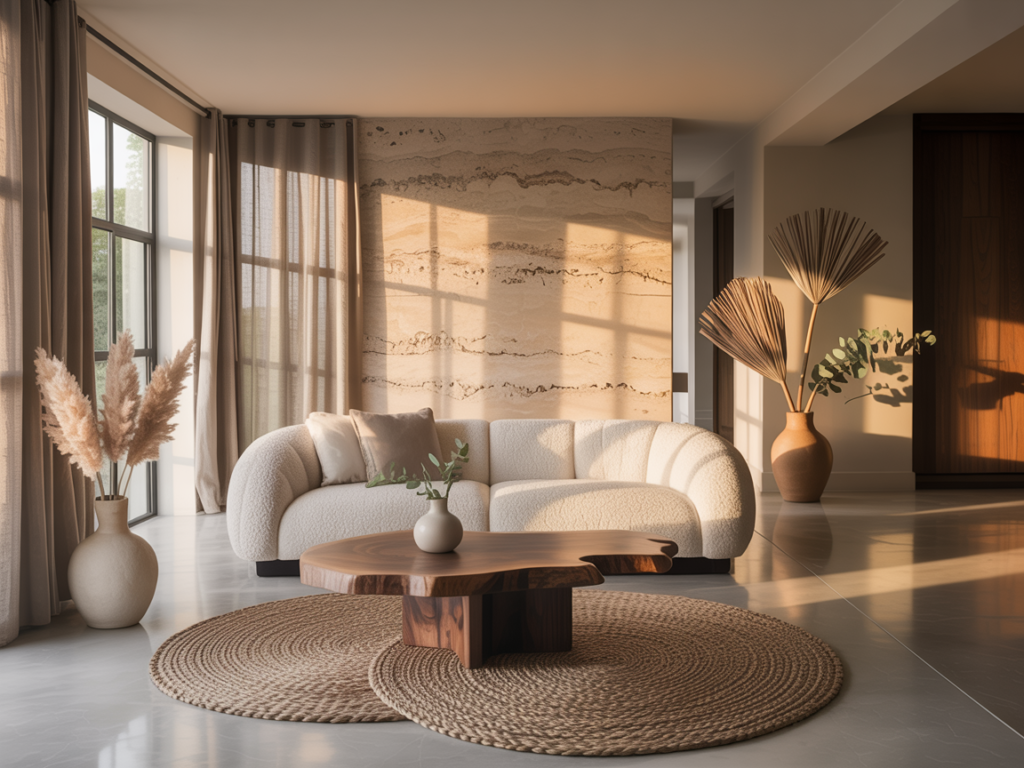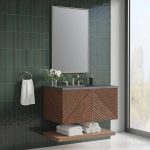Over the past decade, interior design has shifted dramatically—from the clean, cold minimalism of the early 2000s to a warmer, more inviting aesthetic focused on comfort and authenticity. This evolution has brought with it a renewed interest in natural textures. Today, designers and homeowners alike are rediscovering the timeless appeal of organic materials, celebrating the tactile qualities of wood, stone, linen, and more. At The Home Idea, we’re excited to explore the reasons behind this design renaissance and share practical ways you can bring natural texture into your own modern spaces.

Content
Why Natural Texture Matters
The appeal of natural texture in interiors goes far beyond style. In a world dominated by screens and synthetic surfaces, natural materials offer a sensory escape—a way to bring the outdoors in and create a genuine connection to our environment. Textures like rough-hewn timber, handwoven textiles, and matte stone evoke feelings of grounding and tranquility, making our homes feel like true sanctuaries.
Research also suggests that we are instinctively drawn to natural materials. The biophilic design movement, which emphasizes our innate connection to nature, shows that the presence of organic surfaces and textures can reduce stress and improve well-being. Incorporating these elements isn’t just about aesthetics—it’s about fostering a healthier home.
The Rise of Texture in Contemporary Design
Modern interiors once favored sleek, glossy, and uniform finishes. But as lifestyles and tastes evolve, designers are embracing the beauty of imperfection and the depth that textured surfaces bring. You’ll now find:
- Raw Timber Accents: Think exposed beams, reclaimed wood furniture, and feature walls clad in wood wall tiles that add warmth and visual interest.
- Natural Stone Surfaces: From marble countertops to slate floors, stone introduces a tactile quality and unique patterning.
- Tactile Fabrics: Linen drapes, wool throws, and jute rugs provide comfort and artisan charm.
- Handcrafted Ceramics: Pottery with subtle irregularities highlights the human touch and adds character.
These elements work together to create spaces that feel layered, lived-in, and uniquely personal.
How to Incorporate Natural Texture at Home
You don’t need a full-scale renovation to infuse your interiors with natural texture. Here are some approachable ideas:
1. Feature Walls with Wood Wall Tiles
Few things transform a room like a textured feature wall. Using wood wall tiles instantly brings warmth and architectural interest to any space. Whether you opt for a subtle, monochrome effect or a dynamic mix of woods and grains, this is a perfect way to make a statement in living rooms, bedrooms, or even entryways. Plus, wood’s acoustic properties can help soften noise and create a cozier environment.
2. Layered Textiles
Start small with tactile fabrics. Swap out synthetic throws for chunky knits, add linen cushions to your sofa, or layer a natural fiber rug over hardwood flooring. These simple changes can add depth and comfort to even the most streamlined modern rooms.
3. Bring Nature Indoors
Live plants are the ultimate natural accessory. Not only do they add color and shape, but their leaves and bark introduce organic texture. Choose statement plants like fiddle leaf figs or palms, and don’t be afraid to play with rustic planters made from clay, terracotta, or woven baskets.
4. Mix Materials
Avoid monotony by blending different natural surfaces. Pair wooden furniture with stone accents, or juxtapose a sleek marble countertop with handmade ceramic tiles. Mixing materials creates a curated, collected look that feels both modern and timeless.
5. Celebrate Imperfection
Handcrafted décor—such as pottery, woven baskets, or carved wooden bowls—brings a sense of authenticity to your home. These pieces often have slight irregularities that set them apart from mass-produced items, telling a unique story and celebrating the beauty of the handmade.
Natural Texture in Every Room
Let’s break down how natural texture can transform various areas of your home:
Living Room
- Wood wall tiles on a feature wall create a cozy focal point.
- A jute area rug anchors the space and adds earthy tones.
- Linen drapes and woolen throws keep things soft and inviting.
Kitchen
- Open shelving with reclaimed wood planks makes storage both functional and beautiful.
- Natural stone countertops or a textured tile backsplash provide a tactile contrast to smooth cabinetry.
- Add woven baskets for open storage and a touch of rustic charm.
Bedroom
- A live-edge wooden headboard or bedside tables add organic lines and texture.
- Layer bedding with linen sheets and chunky knit blankets for dimension.
- Incorporate soft, low-pile rugs or sheepskin throws for a luxurious underfoot feel.
Bathroom
- Stone sinks or countertops evoke a spa-like atmosphere.
- Teak or bamboo accessories (like bath mats or storage ladders) withstand humidity and add warmth.
- Textured tiles in the shower or as an accent wall bring in both visual and tactile interest.
The Sustainable Side of Texture
Choosing natural materials is often a more sustainable option. Many wood products, for instance, are sourced from responsibly managed forests and can be recycled or upcycled at the end of their life. Stone and clay are durable and age beautifully, while natural textiles like cotton, linen, and wool are renewable resources.
If sustainability is a priority, look for certifications (like FSC for wood), recycled content, or products from local artisans. By investing in quality, timeless pieces, you’ll reduce the need for frequent replacements and create a home that’s both eco-friendly and enduring.
Final Thoughts: Embracing Texture in Your Modern Home
The return of natural texture isn’t just a passing trend—it’s a response to our desire for comfort, connection, and authenticity in the spaces we inhabit. By thoughtfully incorporating elements like wood wall tiles, stone surfaces, and tactile fabrics, you can transform any room into a haven that feels both modern and deeply rooted in nature.
At The Home Idea, we believe that the best interiors are those that engage the senses and tell a story. So, don’t be afraid to experiment with texture, mix materials, and celebrate the unique imperfections that make your home truly yours. The result? A beautifully balanced space that feels as good as it looks.

Wesley is a home improvement blogger who strives to improve his life and the lives of others. He provides homeowners with helpful tips on how to renovate their homes. His goal is not only to provide easy-to-follow instructions, but also share his own personal experiences for those seeking guidance.













